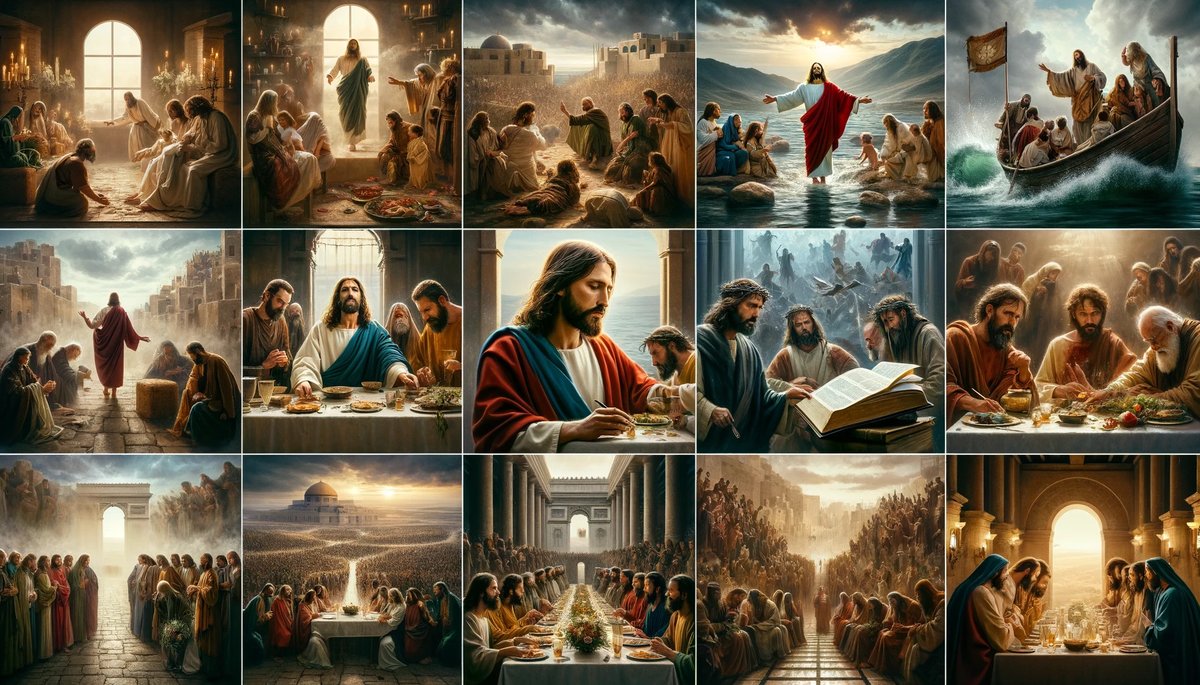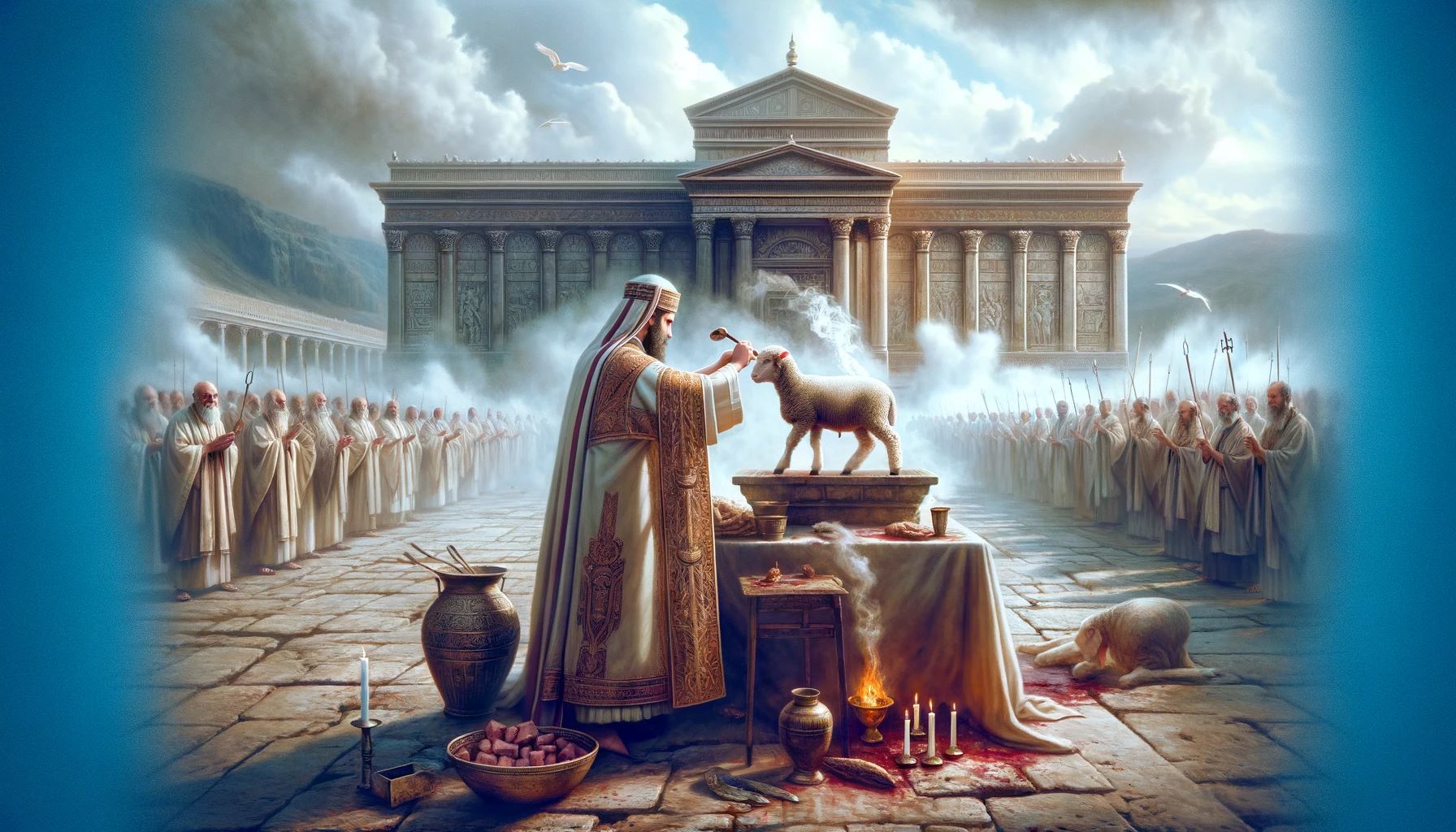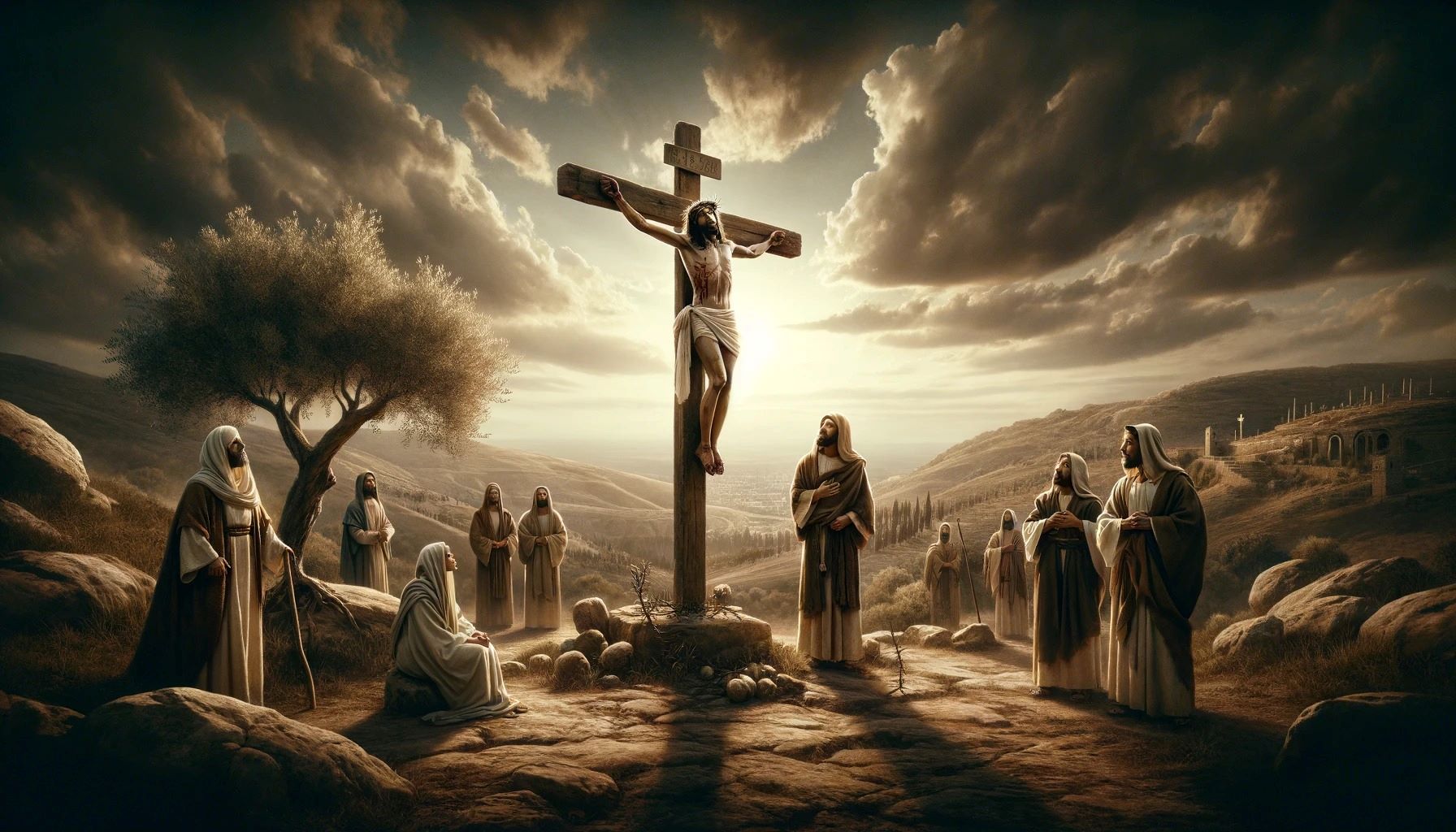Home>Christian Videos>Bible Stories>What Is The Term Where Old Testament Stories Represent Jesus Christ


Bible Stories
What Is The Term Where Old Testament Stories Represent Jesus Christ
Published: March 2, 2024
Jason DeRose, Managing Editor at Christian.net, uses his expertise in religion and journalism to deepen understanding of faith's societal impacts. His editorial leadership, coupled with a strong academic background, enriches the platform’s diverse content, earning him recognition in both journalism and religious circles.
Discover the term where Old Testament stories symbolize Jesus Christ. Explore the significance of these Bible stories and their connection to the New Testament.
(Many of the links in this article redirect to a specific reviewed product. Your purchase of these products through affiliate links helps to generate commission for Christian.net, at no extra cost. Learn more)
Table of Contents
Introduction
What Is The Term Where Old Testament Stories Represent Jesus Christ
The term that describes the representation of Jesus Christ in Old Testament stories is "typology." Typology is a fundamental concept in Christian theology that highlights the connection between the Old Testament and the New Testament. It involves the study of symbols, events, and characters in the Old Testament that foreshadow or prefigure aspects of Jesus Christ's life, ministry, and redemptive work. This article will delve into the significance of typology in the Old Testament, explore how Old Testament stories represent Jesus Christ, and discuss the theological implications of this concept.
Read more: Where Is Jesus Christ In The Old Testament
Typology in Old Testament
Typology in the Old Testament refers to the study of symbolic correspondences between the events, characters, and institutions of the Old Testament and those of the New Testament, particularly in relation to Jesus Christ. It is based on the belief that God, in His divine plan, orchestrated events and narratives in the Old Testament to prefigure or foreshadow the coming of Jesus and the establishment of the Christian faith. Typology serves as a bridge that connects the two major divisions of the Bible, emphasizing the continuity and coherence of God's redemptive plan throughout history.
Typology is rooted in the understanding that the Old Testament is not merely a collection of ancient stories and laws but a rich tapestry of divine revelation that points forward to the fulfillment found in Jesus Christ. Through typological interpretation, biblical scholars and theologians seek to uncover the deeper spiritual meanings and connections that exist between the Old Testament and the New Testament. This approach underscores the unity of the Bible and demonstrates how the Old Testament lays the groundwork for the coming of Christ and the establishment of the Christian faith.
Typology also highlights the divine authorship of Scripture, as it reveals the intentional design and interconnectedness of biblical narratives across different time periods. It underscores the belief that God, through His inspired Word, wove a coherent and purposeful narrative that culminates in the person and work of Jesus Christ. This perspective encourages readers to explore the Old Testament with an awareness of its prophetic and anticipatory nature, recognizing the presence of Christological themes and symbols that point to the redemptive mission of Jesus.
In essence, typology in the Old Testament serves as a crucial interpretive framework for understanding the continuity, fulfillment, and significance of Old Testament narratives in light of the person and work of Jesus Christ. It invites readers to discern the underlying patterns and parallels that connect the Old Testament to the New Testament, ultimately deepening their appreciation of the unity and coherence of God's redemptive plan as revealed in Scripture.
Old Testament Stories as Foreshadowing of Jesus Christ
The Old Testament is replete with stories, events, and characters that serve as foreshadowings of Jesus Christ and His redemptive mission. These narratives, often rich in symbolism and prophetic significance, offer glimpses of the person, work, and attributes of Jesus long before His earthly ministry. They provide profound insights into the divine plan of salvation and the unfolding of God's redemptive purposes throughout history.
-
Adam and Eve: The story of Adam and Eve in the book of Genesis serves as a powerful foreshadowing of Jesus Christ as the promised seed who would bring redemption and restoration to humanity. Just as Adam's disobedience brought sin and death into the world, Jesus, often referred to as the "second Adam," came to undo the effects of the Fall and offer the gift of eternal life to all who believe in Him.
-
The Sacrifice of Isaac: The account of Abraham's willingness to sacrifice his son, Isaac, on Mount Moriah is a striking foreshadowing of the sacrificial death of Jesus Christ. In this narrative, Isaac, the beloved son, carries the wood for his own sacrifice, reminiscent of Jesus carrying the cross to Calvary. This typological parallel underscores the profound truth that God Himself would provide the ultimate sacrifice for the redemption of humanity in the person of His Son, Jesus Christ.
-
The Passover Lamb: The institution of the Passover in the book of Exodus, where the Israelites were instructed to sacrifice a lamb and apply its blood to their doorposts, prefigures the atoning work of Jesus Christ. The Passover lamb, whose blood protected the Israelites from the judgment of God, points forward to Jesus as the Lamb of God whose sacrificial death brings deliverance from sin and spiritual death.
-
Joseph as a Type of Christ: The life of Joseph in the book of Genesis contains numerous parallels to the life of Jesus Christ. Joseph, betrayed by his brothers, unjustly accused, and ultimately exalted to a position of authority, serves as a powerful foreshadowing of Jesus, who was rejected, falsely accused, and later exalted to the right hand of God. Joseph's forgiveness and provision for his brothers also mirror the redemptive work of Christ in reconciling and providing for His people.
-
The Suffering Servant in Isaiah: The prophetic portrayal of the suffering servant in the book of Isaiah anticipates the redemptive mission of Jesus Christ. This enigmatic figure, who endures suffering and rejection for the sake of others, finds its ultimate fulfillment in the person of Jesus, who willingly suffered and died to bring salvation to humanity.
These Old Testament stories, among many others, serve as profound foreshadowings of Jesus Christ, illuminating His identity, mission, and redemptive significance. They underscore the interconnectedness of Scripture and the overarching plan of God to bring salvation to humanity through His Son, Jesus Christ. Recognizing these typological connections deepens our understanding of the unity and coherence of the Bible and highlights the centrality of Jesus Christ in God's redemptive purposes.
Examples of Old Testament Stories Representing Jesus Christ
-
Adam and Eve: The story of Adam and Eve in the book of Genesis serves as a powerful foreshadowing of Jesus Christ as the promised seed who would bring redemption and restoration to humanity. Just as Adam's disobedience brought sin and death into the world, Jesus, often referred to as the "second Adam," came to undo the effects of the Fall and offer the gift of eternal life to all who believe in Him.
-
The Sacrifice of Isaac: The account of Abraham's willingness to sacrifice his son, Isaac, on Mount Moriah is a striking foreshadowing of the sacrificial death of Jesus Christ. In this narrative, Isaac, the beloved son, carries the wood for his own sacrifice, reminiscent of Jesus carrying the cross to Calvary. This typological parallel underscores the profound truth that God Himself would provide the ultimate sacrifice for the redemption of humanity in the person of His Son, Jesus Christ.
-
The Passover Lamb: The institution of the Passover in the book of Exodus, where the Israelites were instructed to sacrifice a lamb and apply its blood to their doorposts, prefigures the atoning work of Jesus Christ. The Passover lamb, whose blood protected the Israelites from the judgment of God, points forward to Jesus as the Lamb of God whose sacrificial death brings deliverance from sin and spiritual death.
-
Joseph as a Type of Christ: The life of Joseph in the book of Genesis contains numerous parallels to the life of Jesus Christ. Joseph, betrayed by his brothers, unjustly accused, and ultimately exalted to a position of authority, serves as a powerful foreshadowing of Jesus, who was rejected, falsely accused, and later exalted to the right hand of God. Joseph's forgiveness and provision for his brothers also mirror the redemptive work of Christ in reconciling and providing for His people.
-
The Suffering Servant in Isaiah: The prophetic portrayal of the suffering servant in the book of Isaiah anticipates the redemptive mission of Jesus Christ. This enigmatic figure, who endures suffering and rejection for the sake of others, finds its ultimate fulfillment in the person of Jesus, who willingly suffered and died to bring salvation to humanity.
These Old Testament stories, among many others, serve as profound foreshadowings of Jesus Christ, illuminating His identity, mission, and redemptive significance. They underscore the interconnectedness of Scripture and the overarching plan of God to bring salvation to humanity through His Son, Jesus Christ. Recognizing these typological connections deepens our understanding of the unity and coherence of the Bible and highlights the centrality of Jesus Christ in God's redemptive purposes.
Theological Implications of Old Testament Typology
The theological implications of Old Testament typology are profound and far-reaching, offering insights into the unity, coherence, and redemptive purpose of Scripture. By recognizing the typological connections between the Old Testament and Jesus Christ, believers gain a deeper understanding of God's sovereign plan of salvation and the fulfillment of His promises through the person and work of Jesus. These implications have significant implications for Christian theology and the interpretation of the Bible.
-
Divine Providence and Redemption: Typology underscores the overarching theme of divine providence in the Old Testament, revealing how God orchestrated events, characters, and symbols to point forward to the redemptive work of Jesus Christ. This highlights the continuity of God's plan throughout history and emphasizes His faithfulness in fulfilling His promises. It reinforces the belief that God is actively at work in human affairs, guiding and directing the course of history toward the ultimate redemption found in Jesus Christ.
-
Christological Interpretation of Scripture: Typology encourages a Christ-centered interpretation of the Old Testament, emphasizing the centrality of Jesus Christ in the biblical narrative. It invites readers to discern the presence of Christological themes, symbols, and prophecies throughout the Old Testament, enriching their understanding of the person and work of Jesus. This approach fosters a holistic view of Scripture, recognizing the Old Testament as a preparatory stage for the coming of Christ and the establishment of the new covenant.
-
Redemptive Patterns and Parallels: Typology reveals redemptive patterns and parallels between Old Testament narratives and the life of Jesus Christ. It demonstrates how the sacrificial system, the exodus from Egypt, the Davidic monarchy, and other Old Testament motifs find their ultimate fulfillment in the person and work of Jesus. This highlights the coherence of God's redemptive plan and underscores the significance of Jesus as the culmination of God's saving acts in history.
-
The Unity of Scripture: Typology underscores the unity of Scripture, bridging the gap between the Old Testament and the New Testament. It demonstrates how the Old Testament anticipates and points forward to the fulfillment found in Jesus Christ, emphasizing the organic relationship between the two testaments. This unity of Scripture reinforces the belief in the inspiration and authority of the entire Bible as the revelation of God's redemptive purposes.
-
Faith and Hope in the Promises of God: Typology engenders faith and hope in the promises of God as revealed in the Old Testament. By recognizing the fulfillment of Old Testament prophecies and types in Jesus Christ, believers are encouraged to trust in God's faithfulness and to anchor their hope in the redemptive work of Jesus. This theological implication of typology strengthens the believer's confidence in the reliability of God's promises and the certainty of His ultimate victory over sin and death.
In summary, the theological implications of Old Testament typology serve to deepen the believer's understanding of God's redemptive plan, the centrality of Jesus Christ, and the unity of Scripture. By discerning the typological connections between the Old Testament and the New Testament, believers are enriched in their faith, equipped for a Christ-centered interpretation of Scripture, and inspired to embrace the promises of God with unwavering confidence and hope.















